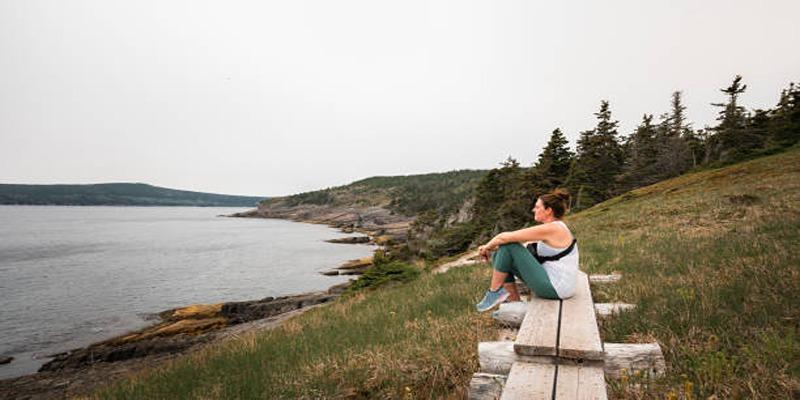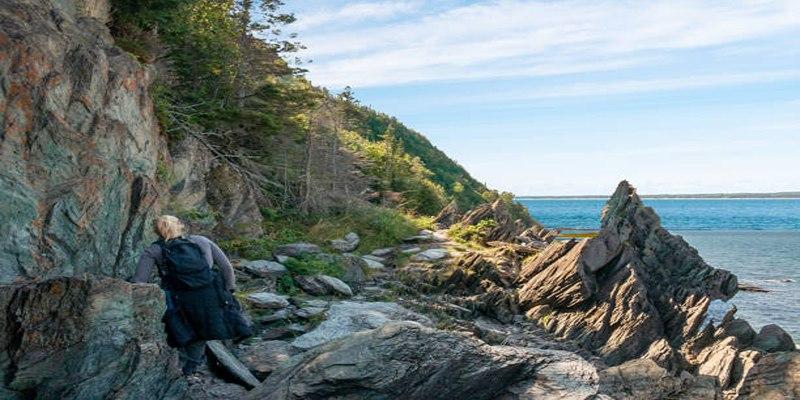The East Coast Trail covers 336 kilometers of the spectacular coastline in Newfoundland with the best hiking in the world. It is a must have experience, this is between gargantuan sea cliffs and by pure beaches with spring icebergs. Watch the weather, and watch the ground: one-day slopes become difficult knocks the following, and vice versa. When you go to Newfoundland and prepare well, you will have memories of magnificent panoramas that mirror a true Newfoundland beauty.

The East Coast Trail is a series of 25 different trails with different challenges and rewards. Popular day walks are Waterfalls (4.2km): Spout Path, extreme eastern (5.2km): Cape Spear Path. The more advanced hikers would be able to climb the difficult Spurwink Island Path (14.2 km) or reach the isolated Motion Path (15.7 km).
Look into how hard and how long a route takes then determine the conditions of a route and then divide up a route. The East Coast Trail Association site contains descriptions of all paths, GPS positions, and frequent information about closure or risks. Save offline map on your phone because cell coverage isn’t reliable over more isolated areas.
Consider your fitness level honestly when choosing paths. Some sections require scrambling over rocks, crossing streams, or navigating steep terrain that becomes treacherous when wet.
Weather in the coastal areas of Newfoundland shifts fast, and appropriate selection of gear is essential to safety. Waterproof jacket, insulation middle and moisture-wicking bottom layers. Hypothermia is a constant danger for summer months because of the wind on the ocean shore and the swift changes in temperature.
Essential items for every hike include:
Long routes or night camping include satellite communicator, and extensive topographic maps. There is poor cell phone coverage in most parts of the trail system.
Hiking begins in May and continues until October, although certain routes are open nearly throughout the year to winter hikers who are experienced. Season June to September is the most predictable and only has the longest light hours.
You beat those afternoon fogs that roll in over the Atlantic because you get up early in the morning. Look at the weather in marine conditions because what is happening coastal-wise may not be the same as what is happening inland. Cliffs may be unsafe during high winds and become disoriented if some are in the fog.
If you're hoping to spot icebergs, plan your visit between April and July when these Arctic giants drift south along the coast. Whale watching is best from June through September.
This is the standard marking system in use on the East Coast Trail where red and white blazes are painted on the trees and rocks. Blazes of orange mark alternative roads or side turns. Fire may also subside or be smothered by bushes and trees and supplementary navigations are vital.
Hang a compass and learn how to use this compass with your maps. GPS navigation/smartphone applications only have a backup function and cannot be considered as the only solution because of battery memory and even loss of signals.
Others penetrate private property where the landowners have kindly given access. Follow only established trails, and other restrictions that may be posted. Nothing will maintain such a relationship in the future among hikers like this will.

East Coast Trail trails cut across a variety of terrain including boardwalks, bogs, rocky scrambles along cliff edges. Most areas require heavy hiking stock with good ankle straps and vicious treads. Waterproof shoes are useful when walking through a stream or when walking through wet grass.
Trekking poles also enhance balance when walking through loose soil or uneven rocks when walking through a steep mountain. They are especially useful when you have a heavy pack on your shoulders or walking in the rain.
There are also boardwalks and wooden bridges on some of the routes which get very slippery during rainy seasons. Be extra careful on such parts and you may want to carry light traction gadgets when hiking during shoulder seasons.
The trail is east coast and traverses or borders a series of small villages where locals have been serving and greeting hikers since the 1950s. Shop local shops, order food, or hotel rooms where you can. There are numerous relatively nearby communities that can provide Shuttle Services, Gear Rental or recommend Tours.
Use Leave No Trace guidelines on your hike. clean all litter, use existing trails, and camp in existing areas only. Toothed products need to be buried at minimum 70 meters near water stocks and trails.
Animals often are seen, specifically moose, black bears, and seabirds. Keep food away and keep a space between you and all wildlife. During the rutting season (September-October) moose can be very violent, and especially when guarding the calves.
Unlike most trail systems the East Coast Trail is not a continuous loop and as such transportation planning is significant. Most hikers book shuttle services or drive two cars on a point-to-point basis. There are a few other area guides that sell hiking shuttles and gear services.
There is limited public transportation but bus route has been provided to the communities along the trail. Taxi services out of St. Johns and beyond can be costly over greater distances.
In cases where the camping involved staying overnight, camping areas were to be researched ahead of time. Some areas permit backcountry camping but with required careful planning and where necessary, use of permits.
The East Coast Trail presents the beautiful coast Canada and friendly people in Newfoundland. To enjoy the maximum of your hike, refer to the East Coast Trail Association site on information on and benefits of membership. New to the area? Go on a guided walk or a workshop. Before going out, always look up weather, tide times and trails conditions. Climb at your level and remember to always put your safety first in order to make this trail truly memorable.
 TOP
TOP
If you still believe that women don’t get heart diseases or that only older people can have heart diseases, you are wrong
 TOP
TOP
How building wealth is possible at any age with practical strategies that focus on consistent habits, smart choices, and long-term thinking
 TOP
TOP
Start making the most of your 401(k) today and secure a stronger financial future. Learn how timing, employer matches, and smart contributions can improve your retirement
 TOP
TOP
How financial aid for college works—from grants and scholarships to loans and work-study programs. Get clear, practical guidance for every funding option
 TOP
TOP
Discover 5 unique horse races that take place around the world, blending speed, thrill, and stunning cultural locations.
 TOP
TOP
Discover how Easter is celebrated across countries, from egg rolling to water fights, offering joy through local traditions.
 TOP
TOP
Explore North Wales’ most breathtaking gardens, from serene floral paths to hillside greenery with sea views.
 TOP
TOP
Wondering if it’s the right time for a loan? Learn how rates, timing, and your finances impact the decision.
 TOP
TOP
Discover the top reasons to pay credit card bills on time and how it safeguards your credit, money, and peace of mind.
 TOP
TOP
Uncover the best experiences in Rome, Italy, with this essential guide. Walk through ancient ruins, explore piazzas, visit historic churches, and get to know the Eternal City at your own pace
 TOP
TOP
Discover the best places to stay in Nashville, from lively downtown hotels to charming neighborhood rentals. Explore top areas suited for music lovers, families, and anyone seeking the perfect Nashville experience
 TOP
TOP
Thinking about a lease buyout? Learn how to evaluate your options, compare costs, and decide whether keeping your vehicle is the right move. Understand the financial side before making your next step